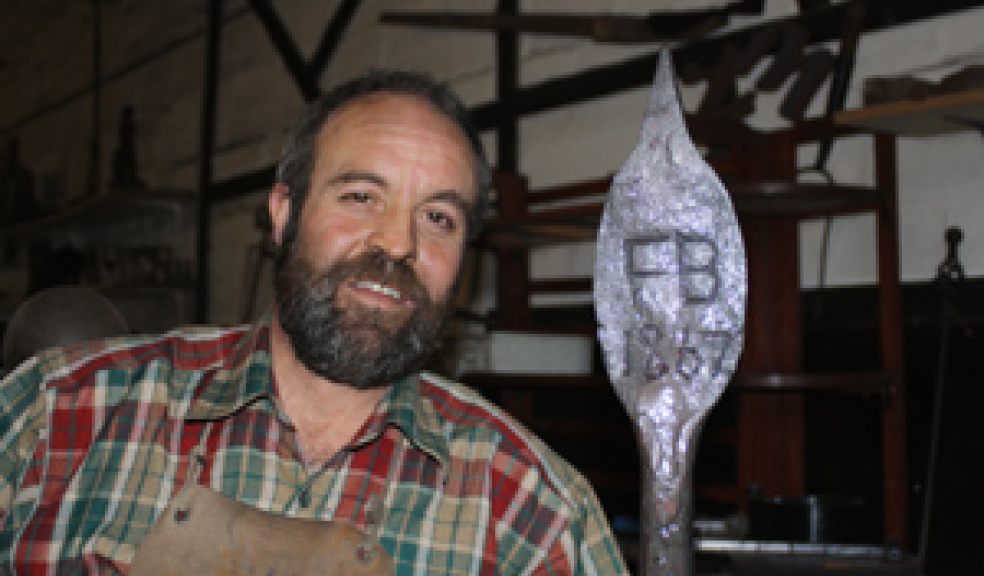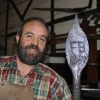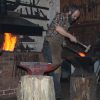
Cobra Heads on Dartmoor
The sound of the blacksmith's hammer could be heard in Princetown last week as a new Dartmoor boundary marker was created at the Princetown Forge.
The marker was made to replace an original which was stolen from Eylesbarrow last year. The marker, originally one of four placed on the moor in the latter part of the nineteenth century, is known as a 'cobra head' due to its unusual shape, resembling the hooded head of a cobra.
Four iron posts, 18 inches tall, resembling a cobra with flattened head are recorded in the Ordnance Survey boundary remark book of 1881 in which sketches show their exact location. All were inscribed with FB (Forest Bounds) on their east facing side, and WB (Walkhampton Bounds) on their west facing side.
The Forest of Dartmoor originally belonged to the Crown and was known as a Forest as it comprised the King's hunting ground. In 1337 it was granted to the Black Prince, who was also the Duke of Cornwall, by his father King Edward III, and has remained part of the Duchy of Cornwall's holdings since then.
Originally 4 iron markers were erected in a straight line from Great Mistor to North Hessary Tor and South Hessary to Eylesbarrow.
The Great Mistor marker has now been replaced by an army flagpole used to fly the red warning flag whilst firing is taking place; the North Hessary location has been covered by an Ordnance Survey triangulation point, and the South Hessary cobra head, damaged a few years ago, has recently been repaired and replaced.
Unfortunately the Eylesbarrow cobra head was broken off and removed in a wanton act of vandalism in 2014. Dartmoor National Park and the Duchy of Cornwall have funded the making of this new cobra head at the Princetown Forge. Later this year it will be fixed in the position of the original on the crest of the hill at Eylesbarrow by the National Park Conservation Works Team.


















